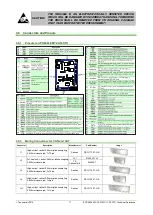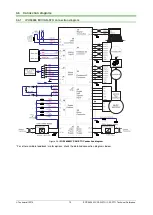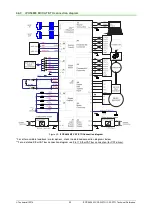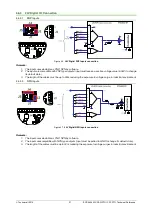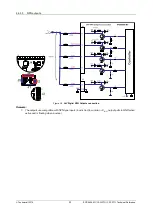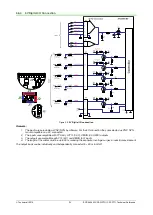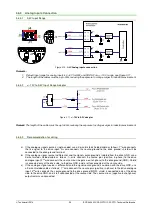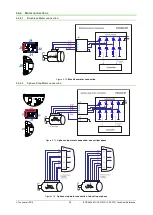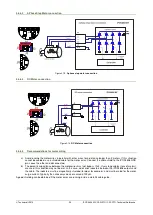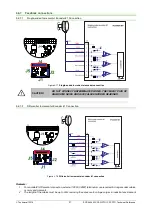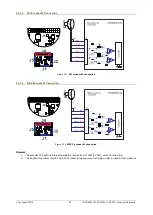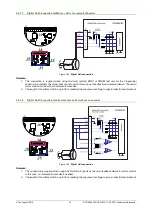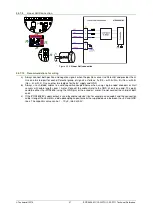
Technosoft 2016
16
iPOS4808 MY-CAN-STO/-CAT-STO Technical Reference
3.4 Motherboard PCB Design
It is recommended to use a multi-layer PCB for the motherboard, in order to have enough room for routing all the pins
of the iPOS4808. Using a 2-layer PCB is possible when some of the iPOS4808 pins remain un-connected.
Below is a list of recommendations for the PCB design of the motherboard:
•
Motor supply and motor outputs: use islands / areas of copper to escape connector area; this will maximize
current capability. When using simple tracks, use at least 100mil cross section (75mil track width for 1oz/ft
2
copper thickness) – for iPOS4808.
•
Motor supply and ground return tracks between iPOS4808 and the nearby V
MOT
decoupling capacitor are to
be considered as EMI sources, and kept to a minimum length.
•
Place the decoupling capacitors on V
MOT
and V
LOG
(see also 0 Power Supply Connection) as close as physically
possible to the iPOS4808, to minimize EM radiated emissions. For un-shielded applications (no metallic box)
and typical EMC regulations, the spacing between iPOS4808 and capacitors must be less than 3 centimeters.
•
In multi-axis applications (multiple iPOS4808 drives on the same motherboard), it is preferable to have a
separate decoupling capacitor for each drive’s V
MOT
. For V
LOG
it is acceptable to share one decoupling
capacitor for two drives.
•
For stringent EMI requirements, it may be necessary to add common-mode filtering on the motor and/or logic
supply inputs. Be sure to use 3-phase EMC filters, not 2-phase filters, in order to fulfill the basic requirement
of zero common-mode current through the filter. This is necessary because the ground negative return is
shared between V
MOT
and V
LOG
.
•
Motor outputs shall be routed with parallel traces, and minimizing the loop area between these tracks. Avoid
placing components above or below the motor output tracks, as these components may become effective
antennas radiating EMI. If possible, route all 4 motor outputs in strip-line configuration (above or below a ground
plane).
•
For stringent EMI requirements, it may be necessary to add common-mode inductors on the motor outputs.
Place these filters near the iPOS4808, not near the external connector, to reduce radiation from the PCB
tracks.
•
Motor outputs must be separated from any nearby track (on the same layer) by a guard ring / track / area
connected to ground. It is recommended to use the same guarding precaution also for tracks on nearby layers,
i.e. use intermediate guard layer(s) connected to ground. The motor outputs must be treated as first source of
noise on the motherboard. Second source of noise is the current flow between each iPOS4808 and it’s
decoupling V
MOT
capacitor.
•
For best EMC performance, it is strongly recommended to provide an un-interrupted ground plane on one of
the inner layers.
•
All GND pins of the iPOS4808
are galvanically connected together on-board the iPOS4808. If the motherboard
provides an uninterrupted ground plane, it is recommended to connect all GND pins to the ground plane, and
use the ground plane to distribute GND wherever needed. If the motherboard does not provide an uninterrupted
ground plane, it is best to use each GND pin for its intended purpose, as described in par. 3.5. This will create
local “star point” ground connection on-board each iPOS4808. For a multi-axis motherboard with one common
power supply for all motors, each motor power supply return track shall be routed separately for each
iPOS4808, and star-point connected at the power supply terminal.
•
The following signal pairs must be routed differentially, i.e. using parallel tracks with minimal loop area:
A1+/Sin+, A1-/Sin- ; B1+/Cos+, B1-/Cos- ; Z1+, Z1- ; A2+, A2- ; B2+, B2- ; Z2+, Z2-, CAN-Hi, CAN-Lo.
•
CAN-Bus tracks must be routed with a bus topology, without branches / bifurcations, in a daisy-chain fashion.
The bus ends must be at the termination resistor(s) and/or external connectors.
•
When using +5V
OUT
as supply for external devices (like encoders, Hall sensors, etc.) provide extra filtering and
protection: use series resettable (PTC) fuses to add short-circuit protection; use transient absorbers to protect
against ESD and over-voltage; add high-frequency filtering to protect against external noise injected on +5V
OUT
.
•
The outer box / case / cabinet must be connected to the motherboard ground either galvanically (directly) or
through high-frequency decoupling capacitors, rated at an appropriate voltage.
CAUTION!
WHEN THE iPOS4808 IS SET IN TMLCAN MODE, IT STARTS TO
EXECUTE AUTOMATICALLY AT POWER ON THE TML APPLICATION
FROM ITS EEPROM. ADD ON THE MOTHERBOARD THE POSSIBILITY
TO DISABLE THIS FEATURE AS SHOWN PAR. 0. THIS MIGHT BE
NEEDED DURING DEVELOPMENT PHASE IN CASE THE EEPROM
CONTENT IS ACCIDENTALLY CORRUPTED.
















